Knee Specialist

Knee Anatomy
The knee is a complex joint made up of different structures including bones, tendons, ligaments and muscles. They all work together to maintain normal function and provide stability to the knee during movement.
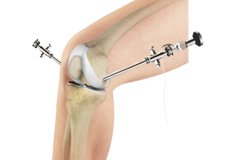
Knee Arthroscopy
Knee Arthroscopy is a common surgical procedure performed using an arthroscope, a viewing instrument, to diagnose or treat a knee problem. It is a relatively safe procedure and most of the patients are discharged from the hospital on the same day of surgery.
Intra-articular injury or abnormality
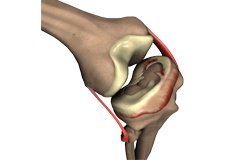
Meniscus Injury
Meniscal tears are one of the most frequently reported injuries to the knee joint. The meniscus is a C-shaped fibrocartilaginous structure in the knee incompletely covering the surface of the tibia where it articulates with the femur.
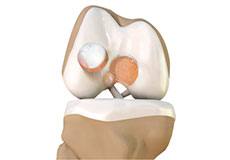
Cartilage Restoration
Articular Cartilage is the white tissue lining the end of bones where these bones connect to form joints. Cartilage acts as cushioning material and helps in smooth gliding of bones during movement. An injury to the joint may damage this cartilage which cannot repair on its own.
Ligament injury including:
Anterior Cruciate Ligament (ACL)
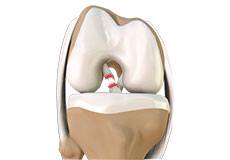
Anterior Cruciate Ligament Tears
The anterior cruciate ligament is one of the major stabilizing ligaments in the knee. It is a strong rope- like structure located in the center of the knee running from the femur to the tibia.
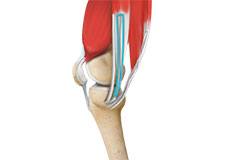
ACL Reconstruction Procedure – Hamstring Tendon
Anterior cruciate ligament reconstruction hamstring method is a surgical procedure to replace the torn ACL with part of the hamstring tendon taken from the patient’s leg. The Hamstring is the muscle located on the back of your thigh.

ACL Reconstruction Patellar Tendon
Anterior cruciate ligament (ACL) reconstruction patellar tendon is a surgical procedure that replaces the injured ACL with a patellar tendon. Anterior cruciate ligament is one of the four major ligaments of the knee that connects the femur (thighbone) to the tibia (shinbone) and helps stabilize the knee joint.
Posterior Cruciate Ligament (PCL)

Posterior Cruciate Ligament Anatomy
Posterior cruciate ligament (PCL), one of four major ligaments of the knee is situated at the back of the knee. It connects the thighbone (femur) to the shinbone (tibia). The PCL limits the backward motion of the shinbone.
Medial Collateral Ligament (MCL)
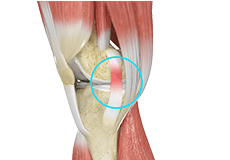
MCL Anatomy
Medial collateral ligament (MCL) is one of four major ligaments of the knee that connects the femur (thigh bone) to the tibia (shin bone) and is present on the inside of the knee joint. This ligament helps stabilize the knee.
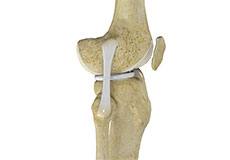
Lateral Collateral Ligament (LCL)
Lateral collateral ligament may tear due to trauma, sports injuries, or a direct blow on the knee. Torn LCL may result in pain, swelling and even instability of the knee.
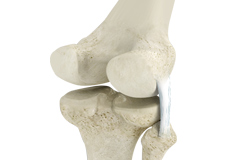
Posterolateral or Posteriormedial Corner Injury
Posterolateral corner injury is damage or injury to the structures of the posterolateral corner. The structures of the posterolateral corner include the lateral collateral ligament, the popliteus tendon, and the popliteo-fibular ligament.
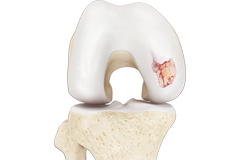
Arthritis
The term arthritis literally means inflammation of a joint, but is generally used to describe any condition in which there is damage to the cartilage. Inflammation is the body's natural response to injury.

Loose Body Removal
The knee has three compartments, the medial (inside), the lateral (outside) and the patellofemoral (kneecap) compartment. Partial knee resurfacing may be an option depending on the affected surface.

Osteochondral Lesions (OCD lesions)
Osteochondritis dissecans is a joint condition in which a piece of cartilage, along with a thin layer of the bone separates from the end of the bone because of inadequate blood supply. The separated fragments are sometimes called “joint mice”.
Extra-articular injury or abnormality
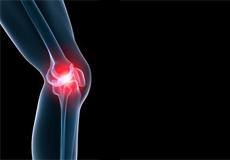
Generalized Knee Pain
Patellofemoral pain syndrome also called runner’s knee refers to pain under and around your kneecap. Patellofemoral pain is seen in number of medical conditions such as anterior knee pain syndrome, patellofemoral malalignment, and chondromalacia patella that cause pain around the front of the knee.
Patella abnormalities
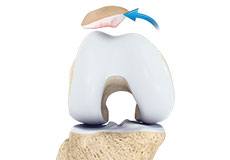
Dislocation
Patella (knee cap) is a protective bone attached to the quadriceps muscles of the thigh by quadriceps tendon. Patella attaches with the femur bone and forms a patellofemoral joint. Patella is protected by a ligament which secures the kneecap from gliding out and is called as medial patellofemoral ligament (MPFL).

Instability
Patellar (knee cap) instability results from one or more dislocations or partial dislocations (subluxations). Patella is the small piece of bone in front of the knee that slides up and down the femoral groove (groove in the femur bone) during bending and stretching movements.
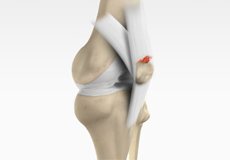
Patella or Quad Tendon Rupture
The patellar tendon attaches the bottom of the kneecap (patella) to the top of the shinbone (tibia). It is actually a ligament that connects to two different bones, the patella and the tibia.

Over Use Syndromes including quad and patella tendonitis
Carpal Tunnel Syndrome is a common, painful, progressive condition that is caused by compression of the median nerve at the wrist area. Common symptoms of carpal tunnel syndrome include numbness and tingling sensation in all the fingers except little finger; pain and burning sensation in hand and wrist that may radiate up the arm and elbow; and weakness in hand with diminished grip strength.

Mal-Tracking
Coming soon
Trauma

Fractures
Tendons are strong cords of fibrous tissue that attach muscles to bones. The quadriceps tendon works with the muscles in the front of your thigh to straighten your leg.

Dislocation
Dislocation of the patella occurs when the patella moves out of the patellofemoral groove, (called as trochlea) onto a bony head of the femur. If the knee cap partially comes out of the groove, it is called as subluxation and if the kneecap completely comes out, it is called as dislocation (luxation).

Contusion
Athletes in all contact sports have many opportunities to get a muscle contusion (bruise). Contusions are second only to strains as a leading cause of sports injuries.Most contusions are minor and heal quickly, without taking the athlete away from the game. But, severe contusions can cause deep tissue damage and can lead to complications that may keep the athlete out of sports for months.










